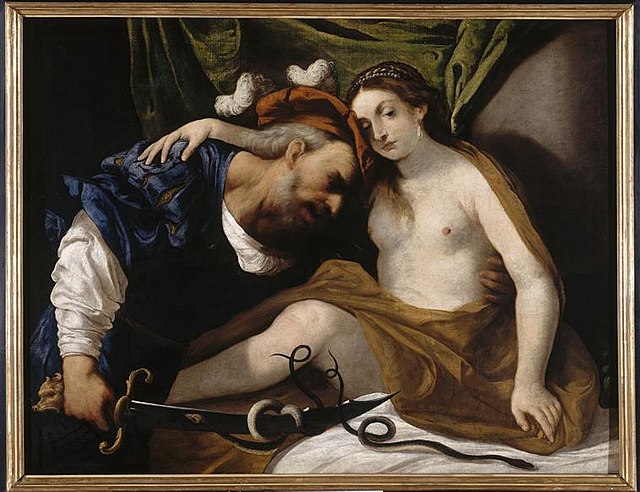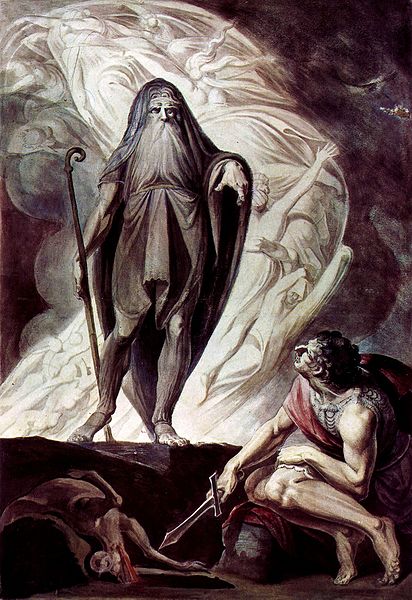In Greek mythology, Tiresias was a blind prophet of Apollo in Thebes, famous for clairvoyance and for being transformed into a woman for seven years. He was the son of the shepherd Everes and the nymph Chariclo. Tiresias participated fully in seven generations in Thebes, beginning as advisor to Cadmus himself.
Pietro della Vecchia, Tiresias transformed into a woman, 17th century.
Tiresias appears to Odysseus during the nekyia of Odyssey xi, in this watercolor with tempera by the Anglo-Swiss Johann Heinrich Füssli, c. 1780–85.
Augury was a Greco-Roman religion practice of observing the behavior of birds, to receive omens. When the individual, known as the augur, read these signs, it was referred to as "taking the auspices". "Auspices" means "looking at birds". Auspex, another word for augur, can be translated to "one who looks at birds". Depending upon the birds, the auspices from the gods could be favorable or unfavorable. Sometimes politically motivated augurs would fabricate unfavorable auspices in order to delay certain state functions, such as elections. Pliny the Elder attributes the invention of auspicy to Tiresias the seer of Thebes.
Roman augur with lituus, an augural wand, symbol of augurs and augury.



